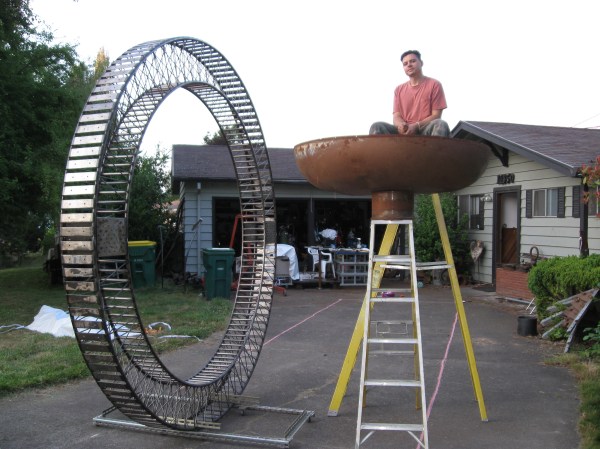
While Outerspace may not have an extremely useful function, being an art installation, we really enjoyed reading through the build information. Basically, Outerspace is supposed to appear to be curious, exploring it’s surroundings and reacting to your contact. We do enjoy a little bit of personality in robots, so this seems like it could be fun. The head has 5 photo sensors and each piece of the “arm” has capacitive sensors. This allows Outerspace to sense what is going on. The motion itself is controlled by 4 servos in the base pulling cables that run through the body.
The programming seems like it could use a little work to achieve the effect of being “curious”, but we see potential here. You can see a video of it in action here.
[via today and tomorrow]














